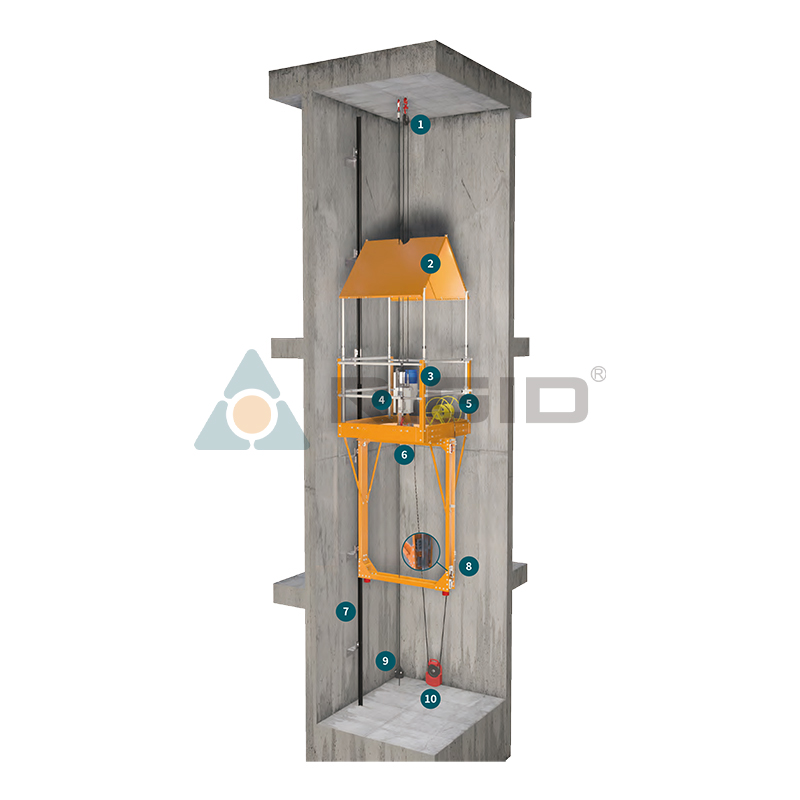Understanding Elevator False Car: What It Is and How It Works
2024-12-21
Elevators are essential components of modern buildings, offering a quick and efficient way to transport people and goods between different floors. However, not all parts of an elevator system are immediately visible to the users. One such hidden yet crucial component is the false car. In this blog, we'll explain what an elevator false car is, how it works, and why it's an important part of an elevator system.
What is an Elevator False Car?
An elevator false car is an essential, yet often overlooked, part of an elevator's counterweight system. It's a platform or assembly that helps balance the elevator's main car during its operation. While the false car does not carry passengers or goods like the main car, it plays a significant role in ensuring smooth and efficient elevator operation.
How Does an Elevator False Car Work?
Elevators typically operate using a counterweight system, where a counterweight (often a set of steel weights) is used to balance the weight of the elevator car. This makes it easier for the motor to move the elevator, reducing energy consumption and wear and tear on the system.
In many cases, however, the counterweight alone is not enough to maintain perfect balance during operation. This is where the false car comes in. The false car is often mounted opposite the elevator car, on the same system of pulleys and cables. It functions as a supplementary weight to provide better equilibrium during the elevator's ascent and descent.

Key Functions of a False Car:
1. Balancing the Elevator System
- The primary function of the false car is to balance the elevator car. Since the false car is linked to the same pulley system, its weight helps compensate for fluctuations in load inside the main car, maintaining smooth operation.
2. Enhancing Efficiency
- By helping to distribute the load more evenly, a false car ensures that the elevator motor doesn’t have to work harder than necessary, which improves energy efficiency. It reduces the strain on the motor and helps prolong the lifespan of the elevator system.
3. Reducing Wear and Tear
- A balanced system helps reduce stress on the mechanical components of the elevator, particularly the cables, pulleys, and motor. The result is a more reliable and less maintenance-intensive elevator.
Applications of Elevator False Car
False cars are used in specific types of elevators, particularly in buildings where heavy traffic or irregular load distribution is expected. They are commonly found in:
- High-rise Buildings: These buildings often require additional counterweight systems due to the sheer height of the elevator shafts.
- Freight Elevators: In freight elevators where the weight of goods can vary greatly, a false car helps maintain stability regardless of the load.
- Heavy-Duty Industrial Elevators: In industrial settings where there are significant weight variations in the elevator car, the false car ensures consistent performance.
Benefits of Elevator False Cars
1. Smooth Operation
- The false car helps maintain a stable system by reducing sudden jerks or jolts when the elevator moves. This makes the elevator experience smoother for passengers and reduces the likelihood of mechanical failures.
2. Energy Efficiency
- By assisting in load balancing, false cars minimize the power required to move the elevator car, which leads to lower energy consumption.
3. Cost-Effective Maintenance
- With fewer mechanical stresses on the elevator system, maintenance costs are reduced, and the system experiences less wear and tear.
4. Extended Lifespan
- With the added support from the false car, the main elevator system lasts longer because of the reduced stress on key components.
Conclusion
Elevator false cars may not be visible to the average elevator user, but they are vital in maintaining the balance, efficiency, and longevity of the entire elevator system. By providing supplementary support to the counterweight system, false cars help reduce energy consumption, wear and tear, and maintenance costs. In high-rise buildings, freight elevators, and industrial applications, their role is indispensable for smooth and reliable elevator operation.


